Today, many of Holliday’s former haunts on the frontier of the Old West in the 1880s surprisingly still exist, much as they did when he yet breathed the fresh Arizona and Colorado air.
Looking for a great vacation opportunity with lots of Old West history? Knowing that many of the historic sites from the 1880s still exist out West, I made a special effort to visit as many of them as possible before time, the elements, and “progress” team up to erase them forever. I also wanted to see the last towns in the old West in which Holliday had lived during the years prior to his death in 1887.
Today, almost all serious researchers and historians know that John Henry Holliday was born in Griffin, Georgia, where he spent the first thirteen years of his life, and that he spent the remainder of his formative years at the family’s Civil War-era home in Valdosta, Georgia, to which they relocated in 1864 to escape the ravages of Gen. William T. Sherman’s Union Army. I wanted to retrace the route Holliday had taken in the final years of his life after he had moved to the West and prior to his expiration from the ills of tuberculosis in Glenwood Springs, Colorado in 1887.

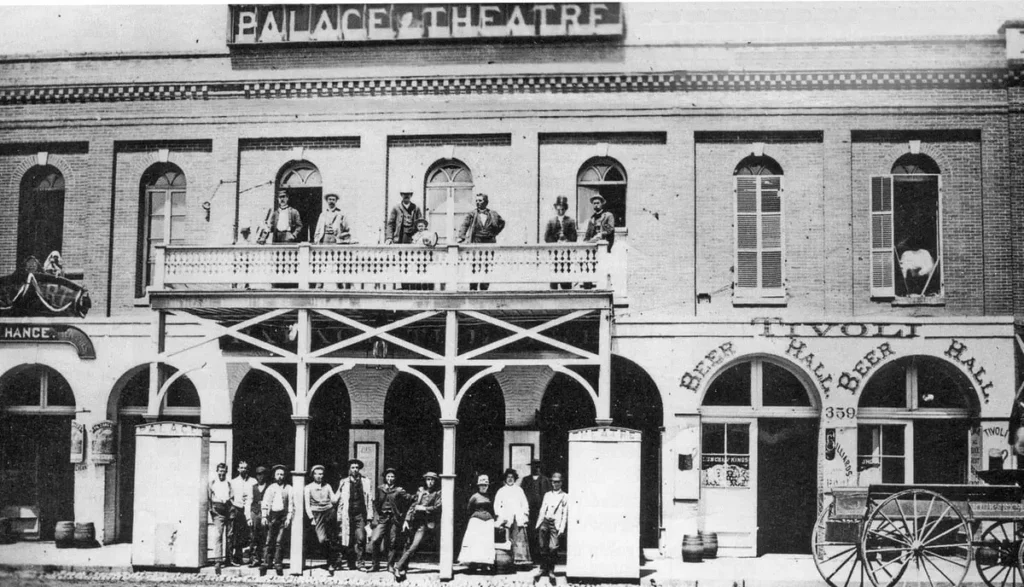
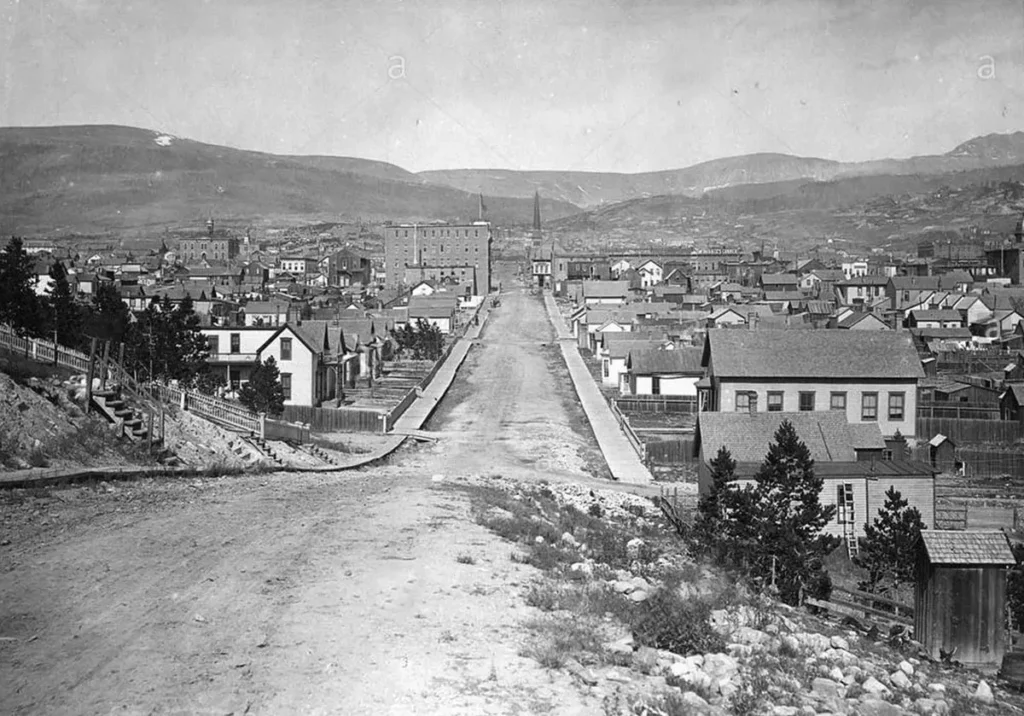
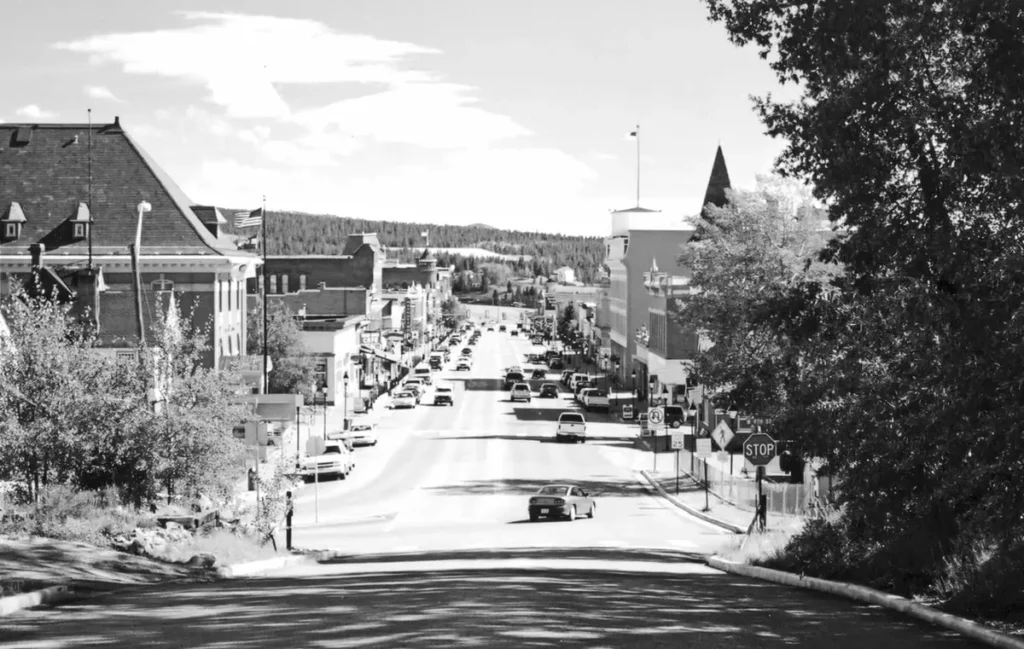
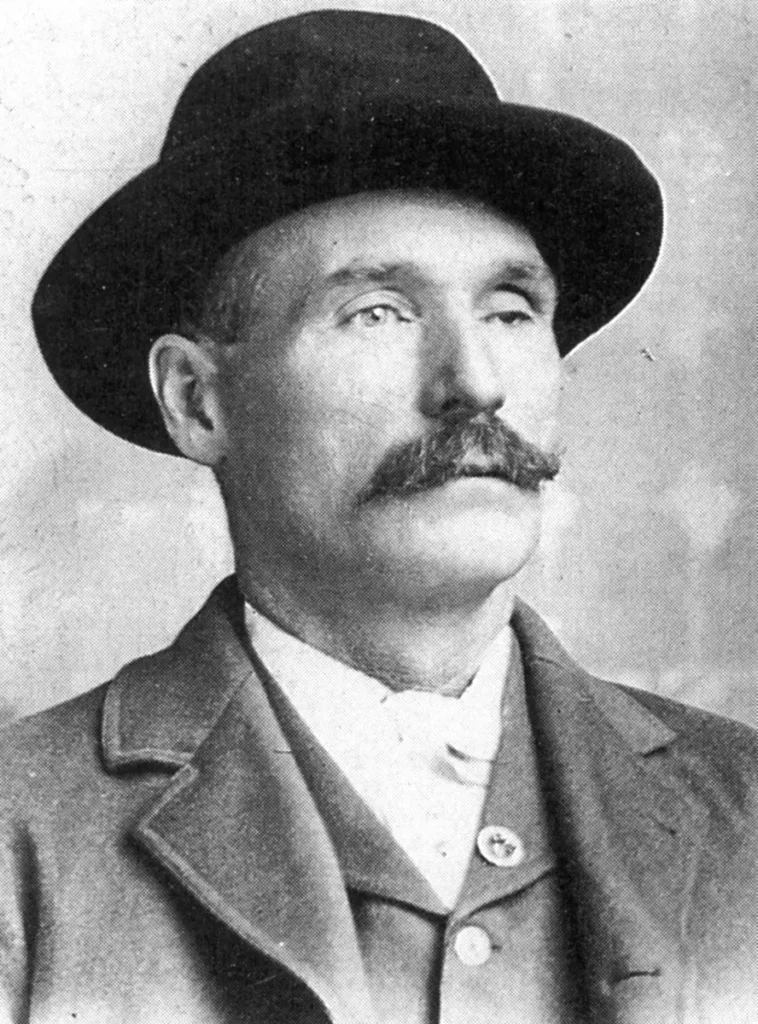

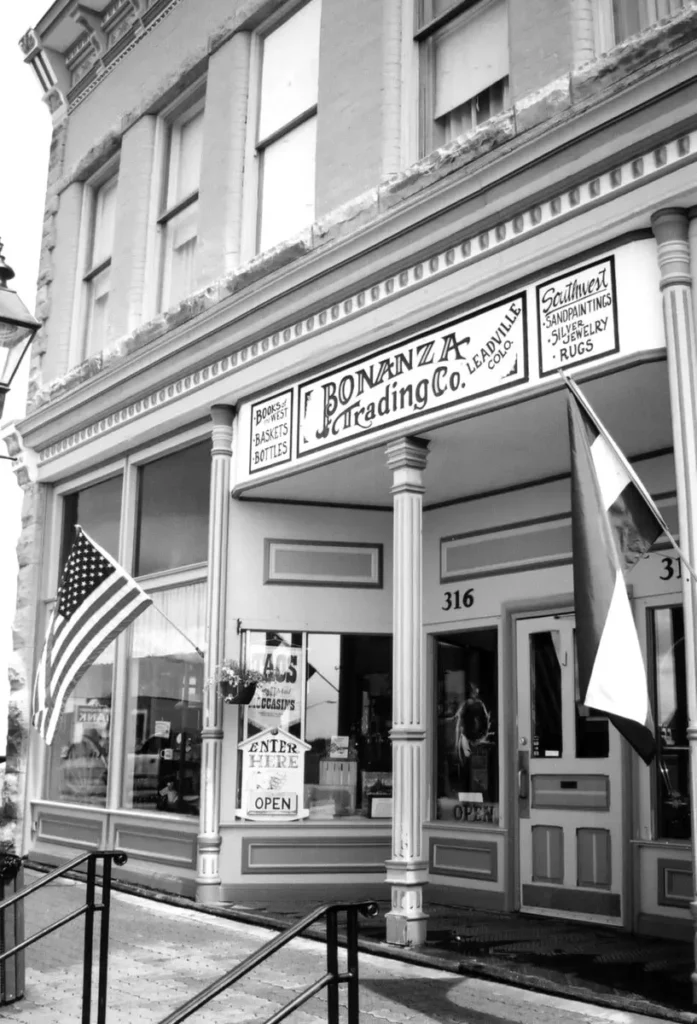
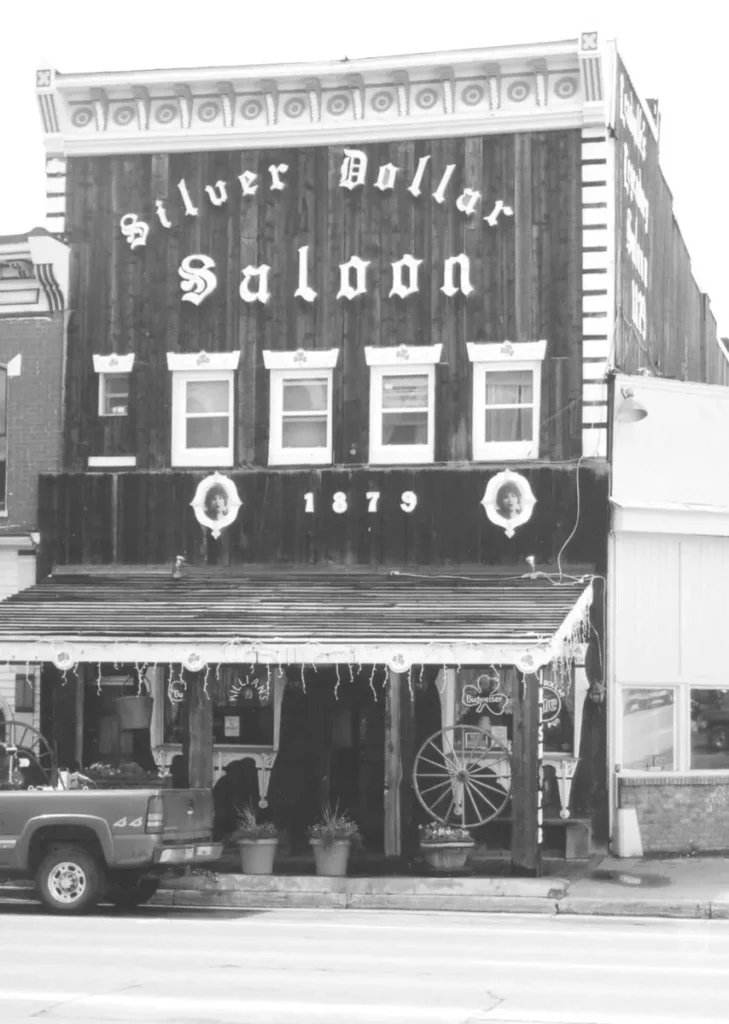
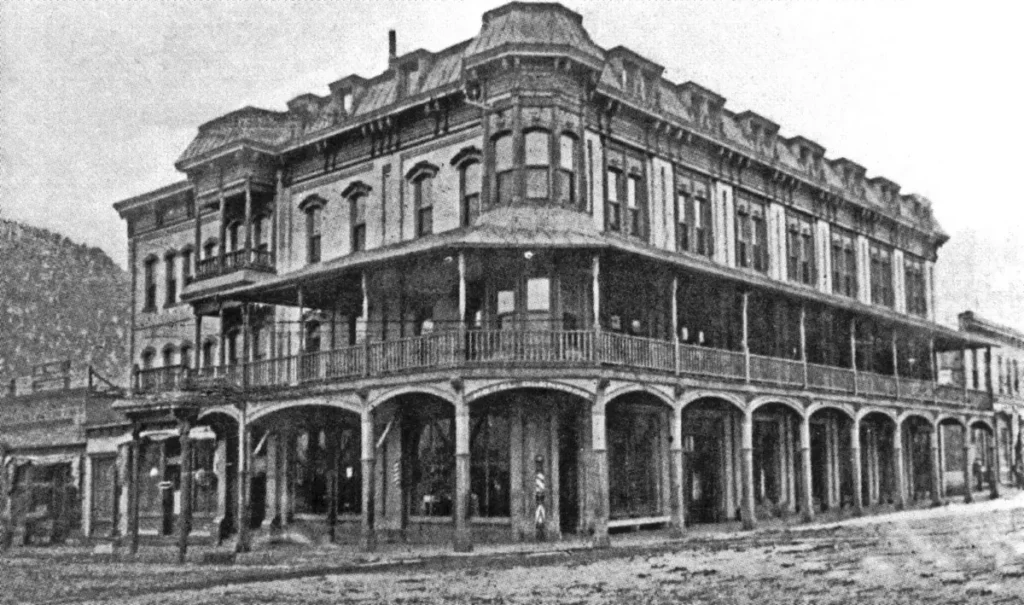

An Arduous Journey
Driving the hundreds of desolate miles across Kansas, I couldn’t help but imagine what it must have been like for Holliday – sick as he was – to travel by stagecoach and on horseback to various towns in this state in the 1870s and 1880s. He traveled by train when possible, but since railroads in the West were somewhat limited at that time, he took stagecoaches to most of his destinations and traveled by horseback in some of the more remote areas.
I’m not certain how Doc originally traveled to Denver. He visited it a number of times both early in his career out West and in the years just prior to his death simply because it was a more modern and civilized city than most any other in the West at that time. He supported himself by gambling, and Denver, as a result of its gold rush heritage, offered many saloons and gambling houses at which the former dentist could ply his trade.
By the time he returned to Denver in 1882, however, he was a “Wanted” man in Arizona for his involvement in what came to be known as “the Vendetta Ride.” He had joined Wyatt and Warren Earp, Turkey Creek Jack Johnson, Texas Jack Vermilion, Sherman McMasters, Dan Tipton and several others in hunting down the outlaws – particularly those known as the “Cow Boys” who had been involved in the murder of Morgan Earp in Tombstone, Arizona.
As a result, Denver no longer was able to offer John Henry the comfortable refuge he had enjoyed in the past. After being arrested there and very nearly extradited back to Arizona, he was literally forced to leave the town and to seek new horizons. He therefore moved on to other gold mining towns which also offered gambling opportunities.
Today, few if any of Doc’s former haunts in Denver remain for the curious. Modern development has eliminated virtually all of the old hotels and saloons from yesteryear in this town. I decided not to waste my time searching for remnants of his days in that city.
Better Luck In Leadville
One needs only to travel the highlands of Colorado today in a comfortable automobile to understand just how uncomfortable it must have been riding in a freezing cold jarring stagecoach for hundreds of miles through the dangerous snow-covered Rocky Mountains of the 1880s. Warm comfortable restrooms at various locations and hot meals at safe comfortable restaurants were of course non-existent.
In the stage coach inns – known as “stands” in those days – where the stage overnighted, male travelers slept several to a bed – oftentimes just to stay warm – and that is assuming there were beds, which many times there were not. Holliday, however, just as most other travelers at that day and time, was a resilient individual, but his illness coupled with the harshness of the trip took a toll upon his health.
According to records, the tubercular dentist took a stage to Leadville in 1882, living there for four years (the most time he spent in any spot in the West). I wanted to visit this historic high-altitude town to see what vestiges of Holliday remain there today.
To reach this isolated little burg, I drove Interstate 70 (which I had followed all the way across Kansas and eastern Colorado the previous two days) and took the Copper Mountain/Leadville exit some miles west of Denver. There, I soon found myself on a precipitous climb up into the mountains – very precipitous.
After driving for many miles with virtually no road signs whatsoever, I eventually reached the town which, as a result of its many gambling opportunities, had attracted Holliday’s attention in 1882. My usually calm wife was working on “my last good nerve” (as if the dangerous drive hadn’t been bad enough), because she was convinced we were lost and headed in the wrong direction. I have many faults, but a lack of a sense of direction is not one of them. When we emerged from the mountains into the outskirts of Leadville at approximately 8:30 p.m. that evening, it was a relief to her and me, to say the least.
Located at 10,152 feet above sea level, this Old West mining town is surrounded by Colorado’s tallest peaks, and includes many historic aspects above and beyond the distinction of being one of Holliday’s former residences. We entered the town on historic Harrison (or Main) Street, enjoying almost the identical view as had Holliday over 100 years earlier.
The historic Tabor Opera House which still stands in town on Harrison hosted many famous entertainers and celebrities over the years, including boxer Jack Dempsey, author Oscar Wilde, magician Harry Houdini and even musician John Philip Sousa and his Marine Band.
The Tabor home at 116 E. 5th Street in town was built by H.A.W. (“Haw” Horace) Tabor sometime around 1877. Horace and his first wife, Augusta, lived in this residence until 1881. At that time, Horace moved to the nearby Windsor Hotel to be near his mistress “Baby Doe.” The Tabor love triangle grew into a national scandal, ultimately ending in a divorce between Horace and Augusta, and a marriage between Horace and Baby Doe.
Unfortunately, Tabor, who was extremely wealthy, was heavily invested in silver. In 1893, after the repeal of the Sherman Silver Act which removed silver as the metal which “backed” currency issued in the United States, a silver panic ensued, sending silver prices plummeting. Tabor, who had owned the huge Tabor Grand Building and the opulent Tabor Opera House among other properties, began a long but steady slide toward insolvency. (I’ll never understand how one can be as wealthy as he supposedly was, and still be over-extended financially to the degree that bankruptcy becomes inevitable. Just doesn’t make sense.)
In 1895, Horace Tabor, amazingly, finally did declare bankruptcy, and Baby Doe eventually began walking the streets of Leadville in rags. Also in 1895, Augusta Tabor died as a result of respiratory problems. She, interestingly, was a millionaire at her death. Horace had become a pauper.
In 1884, in the building next door to the Tabor Opera House, John Henry Holliday was involved in his last gunfight. I had read about Leadville and Holliday’s gunfight there, and attempted to visit the town on a previous trip to Colorado in December of 2001. An unexpected heavy snowfall, and the subsequent closure of the roads into the town, however, ultimately prevented me from accomplishing that objective.
In the 1880s, Leadville was a gold and silver mining town of considerable repute. Holliday had turned to gambling – which had served him well in places like Dodge City, Kansas; Tombstone Arizona; and Denver, Colorado – as a profession. Leadville offered a continuation of the same gambling opportunities.
Historic But “Spartan”
As a result of the extreme elevation of Leadville – even with my healthy lungs – I quite often felt the effects of the oxygen-depleted air. I could only imagine that Holliday, with his ruined lungs, must have struggled to an unbelievable degree. He is known to have contracted pneumonia several times while living here, but amazingly survived the illness each time.
In 1884, the population of Leadville was approximately 20,000 (not counting “soiled doves” as the towns literature proclaims). According to records, it had 92 saloons, 61 lawyers, numerous gambling houses and brothels, and 8 churches. A number of these same buildings still exist today, and the entire town retains a somewhat “frontier” appearance.
My accommodations for the next few days in Leadville would be at the historic Delaware Hotel in the heart of the town. The Delaware has reigned as an architectural cornerstone of Leadville’s National Historic District for years, and is often referred to as the “Crown Jewel” of the town. According to this interesting inn’s literature, it has played host to a number of notables over the years, including even outlaw Butch Cassidy himself, who reportedly once roomed in the hostelry during one notorious visit to the town.
As with Tombstone, Arizona, Leadville, Colorado – due to its somewhat isolated and inhospitable location – has changed little from the Old West days of Holliday. There has been very little “modern development” over the years. Some of the buildings from yesteryear have disappeared as a result of fire and general neglect, and occasionally, a new church or a new saloon – designed much the same as the old ones – has been built, but little else has changed. The area presumably is simply too unattractive, climate-wise to experience any significant increase in population.
To understand this, all one has to do is walk to a second or third floor room in a hotel in the town. Following this effort, a full four or five-minute recuperation will be required by almost anyone over 35 who has not lived in the area for a period of time and become accustomed to the paucity of oxygen.
For this reason, I hereby offer the following advice to future travelers to this site: The Delaware Hotel has three stories of rooms – but there is no elevator in the facility. Therefore, reserve your room in advance – and get a room on the first floor. Otherwise, you will have no one to blame but yourself for your sufferings as you trudge up the stairs of this facility. (It’s even breath-taking going “down” the stairs.)
My room was on the aforementioned third floor. Each trip back to my quarters required the aforementioned four or five-minute rest at the top of the stairs before I could advance any further. (I moved a chair over to a spot near the top of the stairs in which I would partake of my “recovery” after each labored trip.)
Though some mining continues in Leadville today, the town now derives most of its income from tourism. Long gone are the fast times and fast money generated by the one-time mineral wealth of the area in the 1880s. Leadville, however, is very much worthwhile as a tourism destination.
The Delaware was built in 1886, and it may or may not have been patronized by John Henry Holliday. He left Leadville in 1887, spending the final months of his life in Glenwood Springs prior to his death there in November of that year. If he did not visit the Delaware, however, it would be one of the few buildings in town which escaped his attentions, for he was surprisingly active in the community during his residence there, moving from saloon to saloon to ply his trade.
The accommodations at the Delaware are acceptable, if somewhat spartan. This is assuming one doesn’t mind somewhat smallish rooms, and a shower which runs icy cold and scalding hot intermittently as one bathes. I’m not too picky, but my sweet wife was considerably less forgiving.
At the time we were there, a complimentary breakfast was served for patrons of the hotel each morning, and I can honestly say it was a very good meal each day. This wasn’t just a coffee and Danish breakfast. It was a full ride – oatmeal, eggs, toast, sausage, bacon – the works. It was delicious.
Doc’s Old Hotel
During my first day in Leadville, I walked down Main Street (Harrison Ave.) to 316 Harrison to the old hotel/saloon (originally Mannie Hyman’s Saloon) in which Doc had lived and worked from 1882 to 1887. This saloon was also the site of Holliday’s last gunfight in which he shot (and almost killed) Billy Allen in 1884.
Though some historians have questioned their authenticity, a number of dental tools and at least one pistol supposedly once owned by Holliday were displayed upon the walls of this former saloon. I found myself seeking out the site of the former “cigar stand” where Holliday took refuge as he awaited Allen that day.
Doc’s room in this historic building was upstairs on the northwest corner. It is seven-by-fourteen feet in size and was open to the public on occasion for viewing when I was there, although the owner wanted to charge me just for a visit to peek into the room. I declined.
In the 1880s, Mannie Hyman rented nine rooms in this building to various individuals. Holliday’s room included a view through the front window of the snow-covered peaks of the Rocky Mountains.
Although Doc was a faro dealer in Hyman’s, he also regularly gambled himself in John G. Morgan’s Board of Trade Saloon across the street, as well as in a number of other saloons and gambling establishments in town. The Board of Trade building, which also still stands, was called the Silver Dollar Saloon during my visit. Its owners – as it turned out – became an important source of bail money after Holliday’s arrest for the Billy Allen shooting.
The Last Gunfight
In his day, John Henry Holliday developed a strong friendship with the Board of Trade’s owners – John Morgan and Col. Samuel Houston – and it later proved to be a valuable association. When he was arrested for shooting Billy Allen, Holliday was destitute, and so sick he could no longer support himself as a gambler. As a result, he could not raise bail, and undoubtedly would have been forced to endure a long very cold incarceration in jail prior to his trial had not Morgan and Houston stepped forward.
Together, the two merchants quickly posted the $5,000 bail money – a considerable sum in the 1880s – and Holliday was released to return to his sick-bed until the day of his trial. He subsequently was justifiably acquitted of the charges against him.
As I strolled about the main room of the old Hyman saloon, imagining the circumstances of the gunfight, the owner pointed out many details concerning the incident, showing me the spot at which Holliday had stood as he fired, and the spot at which Allen had fallen after being wounded.
Billy Allen was an old enemy of Holliday’s, dating back to the Tombstone days in 1881. In an amazing stroke of bad luck, the weakened Holliday had the misfortune to be in Leadville at the same time as did Allen, who was a friend of the Clantons, a family of outlaws who had opposed the Earps and Holliday during their days in Arizona.
Allen had also testified against Holliday at the Inquest following the shooting at the O.K. Corral, and a number of individuals – including Doc himself – believed Allen had fired several shots at him during the Tombstone fracas. For this and other reasons, Allen and Holliday were anything but friends.
By the time Doc and Allen met again in Leadville, Holliday was much weaker and sicker, and Allen no doubt saw an opportunity to gain a reputation for himself as the individual who finally got the drop on the famed gunman. It was a confrontation which was almost inevitable.
Despite the fact that Holliday was almost defenseless by this time (He had ceased carrying a handgun, since he could not afford the fine if he were caught carrying a concealed weapon.), he seemed to find an inner resolve which enabled him to deal with the situation.
As an indication of just how desperate Doc had become by this point, he had fallen into a trap set by the trouble-maker Allen, borrowing $5.00 from him for a gambling stake. When he was unable to repay the loan at the appointed hour, Allen began publicly bullying and humiliating him.
Doc eventually received word that his tormentor was coming to pay him a final visit, and that if he did not come forth with the overdue $5.00, a physical beating at the very least would be forthcoming. In the end, however, it was Allen who ended up writhing upon the floor, with Doc escaping uninjured. It was interesting to visit the building where that drama had finally played out.
Leadville was very cold – in the 30s – the day I visited in the month of September. There was snow on the ground and more snow falling. I can only assume it was much the same during Holliday’s stay, and despite the liveliness of the saloons and gambling opportunities at the time, the town must have been a lonely place for him in the 1880s.
Other Sites In Leadville
I next went up the hill to the Leadville, Colorado & Southern (LC&S) railroad depot three blocks northeast of the main street. This depot was built in 1893 to service the Denver, South Park & Pacific (DSP&P) and Colorado & Southern (C&S) railroads. Since Holliday departed Leadville in 1887, he never used the DSP&P or the C&S railroads or the associated depot, but this facility was patronized by a number of other notables.
Other railroad lines, however, had preceded these into Leadville, and almost certainly were patronized by Holliday in his numerous travels to and from the town. The Denver & Rio Grande had arrived in 1880, and the Colorado Midland arrived in 1887. Though he almost certainly used these rail lines as his diminishing funds allowed, Doc, more often than not, traveled within the freezing confines of a jarring stagecoach, since it was less expensive.
When I was there, the LC&S railroad offered an awe-inspiring excursion ride on the old rail line. The trip lasts two and one-half hours and takes passengers high into the Rockies to the continental divide. Although the cost seemed somewhat pricey to me at the time ($24 for adults; $12.50 for children), I am told this ride is well-worth the money.
There were many other buildings and interesting spots to visit in this town from yesteryear. After several days, in this vicinity, however, I was ready to move on. I was restless just as I suspect Holliday eventually became, though he spent much more time here than did I.
Gunning For Gunnison
Our next destination was Gunnison, Colorado. We arose at 7:15 a.m. the next morning and enjoyed our last breakfast in the famed Delaware. After loading up our rented Dodge Durango, we headed south on U.S. 24 to U.S. 285 and thence to U.S. 50. This was an amazingly beautiful drive, and should not be missed if ever one has the opportunity to enjoy it. Huge towering snow-capped peaks and very striking rock formations all along this route make it a fascinatingly scenic route.
We finally reached Monarch Pass high in the mountains, and I thought at first that we were going to have to use snow-chains to make it through the pass. Fortunately there had not been an accumulation of ice, and so the chains were not necessary. During winter months, however, snow chains very definitely would be required in the higher elevations such as this – and that’s assuming the route would even be open, as it often is not in winter.
We drove through deep snow for a number of miles (Remember, this was in September when the temperatures were in the 80s and 90s in Georgia.) before eventually dropping below the snow line again on the other side of the pass.
We finally reached Gunnison after a full day’s ride. I could see why this spot was chosen by Wyatt and Warren Earp as a spot to spend the summer of 1882. They had just finished their “Vendetta Ride” in Arizona, and were on the run from what at the time were corrupt Arizona authorities.
The remote and isolated location of Gunnison offered just the peace and solitude the Earps and Doc no doubt were seeking at that time. This tiny mountain community is located in a broad, somewhat fertile valley at the top of the Colorado Rockies. It would have been very difficult to reach – especially by someone on horseback in the 1880s.
According to records, the Earps camped outside town for the entire summer, but Doc, preferring an easier life in the hotels of Denver, only remained for a week or so. Gunnison becomes brutally cold in the winter (with temperatures reportedly at minus 20 degrees Fahrenheit), so camping in any season other than summer simply is not feasible.
Though the town of Leadville had seemed somewhat limited in scope, the town of Gunnison was even smaller, but there seemed to be a bit more “new” and promising modern development here. Doc, however, felt Gunnison was simply too primitive for his tastes, and moved on to Denver for a few months before eventually traveling to Leadville. Wyatt and Warren eventually drifted back southwestward to California and Warren – amazingly – went back to Arizona a year or two later to work on a cattle farm only a short distance from Tombstone where the Earp family had suffered so much harm.
Hooray For Ouray
Judy and I continued our drive along beautiful Blue Mesa Lake (Colorado’s largest) for many miles. We witnessed still more amazing stretches of breath-taking scenery. This drive from Leadville to Ouray and on to Telluride has to be one of the most beautiful in America.
We turned onto U.S. Highway 550 and after additional miles, finally reached our next destination – historic Ouray, Colorado. This town also was a gold-mining community after the precious yellow metal was discovered there in 1875.
It is not known by this writer if Holliday traveled to this vicinity during his wanderings to various gambling opportunities in Colorado, but the Earps, in fact, did spend time here. Though Holliday crisscrossed this vicinity in the 1880s, and therefore could easily have passed time as well in Ouray, it would have been an obscure visit at best, since no mention of it has been found in historic records. That absence of a record of his visit to this town, however, means nothing, since much of Doc’s wanderings were done with no mention or record of his visits whatsoever, and often under an assumed name.
Ouray was on the route the Earps would have taken from Gunnison back to California. We followed what appeared to be portions of an old trace on our route to this mountainous town, and on several occasions I in fact did see historic markers along the way identifying it as the old stagecoach trail, so it almost certainly was the route followed by the Earps.
The magnificent surroundings of Ouray – the San Juan Mountains – are awe-inspiring to say the least, rising to 14,000 feet. A photograph or verbal description simply does not do this area justice. These peaks form an unbelievable back-drop for the elegant Victorian homes and old West commercial buildings of this town, many of which were built between 1880 and 1900.
The population of Ouray is only 800 permanent residents year-round, and that’s one of the things I liked best about this locale. It not only is an unbelievably scenic area, but a very peaceful one as well. It is located at 7,770 feet so it’s high enough that you know you’re in the Colorado Rockies, but low enough to have pleasing weather year-round.
A typical summer day in Ouray is sunny, with temperatures in the 70s and sometimes even in the 80s. Evening temperatures range in the 50s. A typical winter averages 140 inches of snowfall and the days are sunny and bright with highs averaging in the 40s and lows in the high teens. It gets plenty cold enough to provide a favorable environment for lots of snow, but it’s not unbearably cold – just the way I like it. Although it is not necessary, it is strongly advisable to drive only a four-wheel drive vehicle with snow tires or chains during the winter.
Our accommodations in Ouray were at the St. Elmo Hotel. This marvelous old inn near the downtown area was built in 1898, and – just as many other historic buildings in this town – still exists almost as it did when built over 100 years ago. I was not able to learn if one of the aged commercial buildings on the old main street of this town once served as a hotel in which a wandering John Henry Holliday might have passed time. I did, however discover that another historic figure from the old West spent time here.
True Grit
The next morning, we emerged for a visit to the old downtown area of Ouray. It was because of the scenic beauty and Old West atmosphere here that selected spots in Ouray and the adjacent community of Ridgway were used in the filming of the 1969 major motion picture, True Grit. Starring John Wayne, Kim Darby, Glen Campbell and Robert Duvall, this award-winning movie is still one of the most popular Westerns ever filmed, earning the “Duke” an Academy Award for his performance.
Interestingly, the old courthouse in the middle of Ouray was the site at which the True Grit courthouse scenes with Wayne were filmed. As we were leaving this town several days later, I was able to stop at Ridgway a few miles away to see where Wayne had performed in other scenes from the movie filmed in that town. Interestingly, a young Marion Morrison – prior to his identity as John Wayne – both knew and occasionally conversed with an aging Wyatt Earp in the late 1920s in Hollywood when Earp was acting as an advisor to the new-fangled movie productions attempting to portray the Old West.
I later traveled to other scenic destinations in Colorado, New Mexico and Texas on this same trip. The only other town I visited, however which was also visited by Holliday was Dallas, Texas, ironically where Doc’s travels in the old West had begun so many years ago. Today, just as in Denver, Holliday’s tracks in fast-moving Dallas have also been erased forever by modern development.
Prior to Dallas, I made additional stops at historic Telluride, Colorado. While I was there, I was able to visit the old San Miguel Valley Bank building (still extant on Main Street in Telluride) which was robbed by Butch Cassidy and three accomplices in 1889, two years after Doc’s death. And as a juxtaposition of time eras, I couldn’t help but smile at the fact that just a few hundred yards away, the famous (and now no longer existent) Allman Brothers Band was performing one of their last concerts.
Following my departure from Telluride, I drove down State Highway 145 which is an ancient travel route through the Rockies, originally cut by migratory animals in prehistory. This trail subsequently fell into use by Native Americans and still later by white settlers as a stage coach route. According to records, Cassidy traversed this route many times as he rustled horses to sell in Telluride. He also followed it as he fled Telluride after robbing the bank there in 1889.
It is not known by this writer if Doc Holliday traversed this vicinity in southwestern Colorado, but Wyatt and Warren Earp almost certainly did. If you’re looking for an interesting vacation in some very historic Old West towns, visit the places described above. You’ll be glad you did, and along the way, you’ll gain an appreciation for the rugged life endured by those hardy travelers of yesteryear – particularly John Henry Holliday.